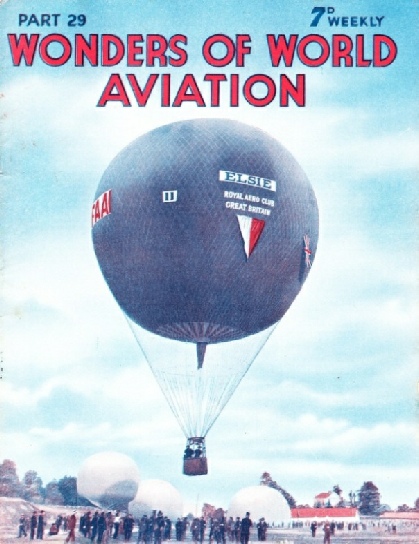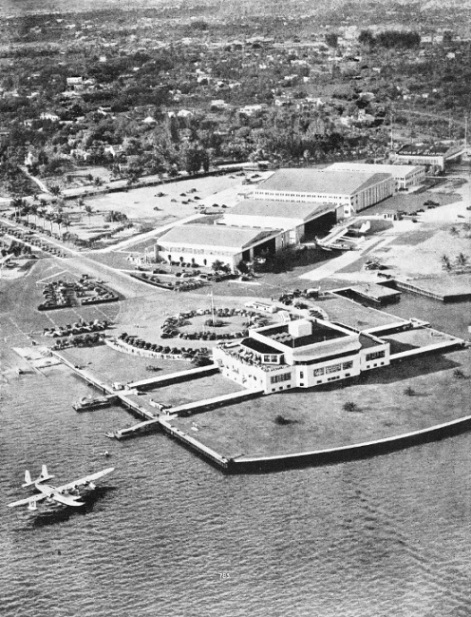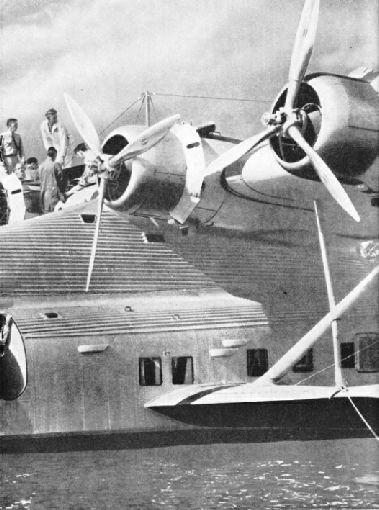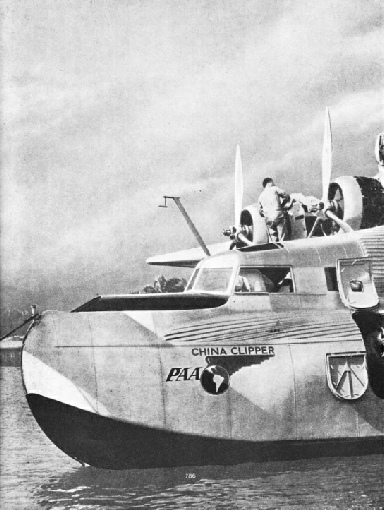
© Wonders of World Aviation 2015-


Part 29
Part 29 of Wonders of World Aviation was published on Tuesday 20th September 1938, price 7d.
This part included a central photogravure supplement further illustrating the article on Pan American Airways.
The Cover
This week’s cover shows the British balloon Elsie, which took part in the Gordon Bennett Balloon Race in 1925. The Elsie crashed during the race, which was won by Belgium. Up to 1937 Great Britain, though a persistent competitor, had never won the Gordon Bennett Aeronautic Cup. The present cup is the third in the series. The first cup was won outright by Belgium, in 1922, 1923 and 1924. A similar run of victories - in 1926, 1927 and 1928 - gave the second cup to the United States.

Contents of Part 29
Training Boys in the RAF (Part 2)
This chapter describes the many opportunities for boys between 15 and 17¼ to be taught skilled trades in the RAF. The article is concluded from part 28.
The Bristol Aeroplane Company
The Bristol Aeroplane Company Limited is the largest single aeronautical organization in the British Empire and was the first company to be formed exclusively for the production of aircraft in Great Britain. In 1910 the late Sir George White founded the British and Colonial Aeroplane Company, as it was then called. The Bristol Company boldly began the design and manufacture of aeroplanes on a large commercial scale, a policy which required faith in the future of aviation.
The Fairey Battle
The Fairey Battle is one of the new types of monoplane medium bombers which are in large scale production for the Royal Air Force. This chapter describes this monoplane which is designed to give maximum performance at considerable heights.
This is the second article in the series on Famous Aircraft.
Pan American Airways
The Pan American Airways system, often referred to as the PAA, operates, in conjunction with its associated companies, more than 53,000 miles of air routes on regular schedules. It serves forty-seven countries. The system includes 204 airports and 143 private weather and radio stations. Up to June 1, 1938, figures showed that the company had carried 997,443 passengers; the total passenger-mileage was 364,421,048. The air company carries a high percentage of air mail and freight, known in America as “express”.
Pan American Airways (photogravure supplement)
Pan American Airways
Photogravure Supplement
THE AERODROME AT MIAMI is the starting point for many of the extensive routes of Pan American Airways. At Miami the internal air lines of the United States link up with those of Pan American Airways. A large number of clippers are based at Miami, which is probably the world’s most busy marine airport.
Pan American Airways Photogravure Supplement - 2
ONE OF THE FIRST CLIPPERS to operate on the transpacific service of Pan American Airways was the China Clipper. This type of aircraft is known as the Martin 130. The four two-row fourteeen-cylinder Pratt and Whitney radial engines were of the Wasp type developing 830 horse-power each.
The Fight Against Fog
If any experienced pilot were asked to say the thing he feared most the answer would almost certainly be fog. The fog menace becomes more and more serious with the increase in air traffic, and commercial aviation will be considerably handicapped if a solution to this problem is not found. So seriously is this menace regarded that the Aeronautical Research Committee of the Air Ministry has made arrangements at a number of airports for an extensive series of large-scale tests on fog dispersal. This chapter describes in detail the difficulties presented by the different kinds of fog (there are said to be fifteen different types) and that methods that are being evolved to fight them.
The German Air Force
In this chapter the expansion of the German Air Force is described. It also deals with the aeroplanes that have made and are making Germany’s air force one of the finest in the world. Subsequent chapters will deal with the air services of other leading countries.
The second chapter will deal with the French air force. The Armee de l'Air has been completely reorganised since the French Air Ministry was created in 1928, and the French aircraft industry has been nationalized.
Pioneers of the Parachute (Part 1)
When aviation began to develop, a few men applied themselves to the solution of the problem of descending by parachute from an aeroplane in flight - a far different proposition from jumping from a free balloon. This chapter describes the different technique needed when parachuting from aeroplanes and some of the pioneering parachutists.
The article is concluded in part 30.
Pan American Airways
Photogravure Supplement - 3
LAUNCH OF AMERICA’S LARGEST AEROPLANE, the new Boeing 314 clipper. The cradle on which the flying boat was run down into the water weighed fifteen tons and was provided with floatation tanks to bring it to the surface of the water. During flight the four engines are accessible through passageways in the wings.



